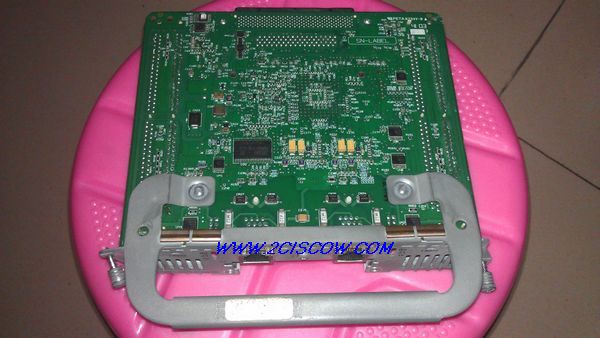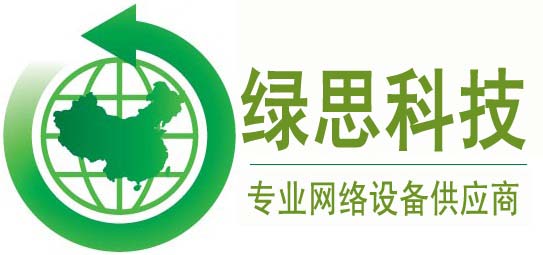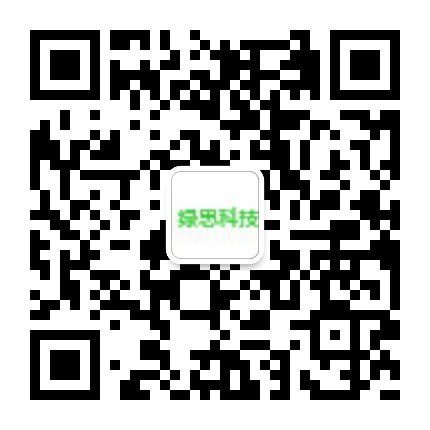产品分类
联系我们
回收CISCO NM PA系列
首页 » 产品展示 » 网络模块接口卡回收 » 回收CISCO NM PA系列
Cisco IOS® Software Release 12.3(11)T and NM-HDV2-2T1E1思科模块later support the DSPware superseding features that this document discusses. The follow-up feature, which automatically identifies to users when a non-default DSPware NM-HDV2-2T1E1思科模块has been installed and is active, is introduced in IOS 12.4(15)T  and later. The document mentions specific Cisco IOS Software releases only as necessary to clarify the discussion point.
and later. The document mentions specific Cisco IOS Software releases only as necessary to clarify the discussion point.
NM-HDV2-2T1E1思科模块Voice router hardware with support for C5510 DSPs include:
-
Cisco 1861, 2600XM, 2691, 2800, 3640, 3660, 3700, 3800, IAD2430, VG202, VG204, VG224, AS5350XM/AS5400XM with AS5X-FC, VGD 1T3 with VGD-FC, and UC500 platform families
NM-HDV2-2T1E1思科模块 -
Analog FXO, FXS, and DID voice cards with support on these platforms, using TI C5510 DSP technology – NM-HD-1V, NM-HD-2V, NM-HD-2VE, EVM-HD-8FXS/DID, EM-HDA-8FXS, EM-HDA-3FXS/4FXO, EM-HDA-6FXO, VIC2-2FXO, VIC2-4FXO, VIC2-2FXS, VIC-4FXS/DID, VIC2-2DID, VIC3-2FXS/DID, VIC3-2FXS-E/DID, VIC3-4FXS/DID, VIC3-2E/M, EM3-HDA-8FXS/DID
-
Digital FXO, FXS, BRI, and PRI voice cards NM-HDV2-2T1E1思科模块with support on these platforms, using TI C5510 DSP technology – NM-HDV2, NM-HDV2-1T1E1, NM-HDV2-2T1E1, VWIC-1MFT-1T1, VWIC-1MFT-E1, VWIC-2MFT-T1, VWIC-2MFT-E1, VWIC-2MFT-T1-DI, VWIC-2MFT-E1-DI, VWIC2-1MFT-T1/E1, VWIC2-2MFT-T1/E1, VIC2-2BRI-NT/TE, EM-4BRI-NT/TE
-
C5510 DSP card products – PVDM2-8, PVDM2-16, NM-HDV2-2T1E1思科模块PVDM2-32, PVDM2-48, PVDM2-64, AS5X-PVDM2-64, VGD-PVDM2-64
-
Where the document names specific hardware parts, the applicable NM-HDV2-2T1E1思科模块software versions are those which support the named hardware. Refer to these documents for hardware and software compatibility matrices for voice products:
-
Voice Hardware Compatibility Matrix (Cisco 17/26/28/36/37/38xx, VG200, Catalyst 4500/4000, Catalyst 6xxx)
-
WAN Interface Card (WIC) / Platform Hardware Compatibility Matrix for 1600, 1700, 2600, 3600 and 3700 Series Routers
-
The information in this document was created from the devices in a specific lab environment. All of the devices used in this document started with a cleared (default) configuration. If your network is live, make sure that you understand the potential impact of any command.
Conventions NM-HDV2-2T1E1思科模块
Refer to Cisco Technical Tips Conventions for more information on document conventions.
Problem Description NM-HDV2-2T1E1思科模块
VoIP network technology employs the use of Digitial Signal Processors (DSPs) to process voice samples and perform the conversion of audio between the continuous time domain and the digital IP domain. On Cisco IOS, voice platforms DSPs from the Integrated Circuit (IC) manufacturer Texas Instruments (TI) have traditionally been used in model flavors of the C542, C549, C5421, and most recently the C5510 variety.
DSPware is software which is bundled with IOS and contains the instruction set which describes and drives the ability of the DSPs to encode and decode voice samples using any of a number of standards-based voice codecs, perform transcoding and conferencing functions, and provide signaling resources to analog and Channel Associated Signaling (CAS) voice-ports so that line events can be detected and acknowledged. At boot-time the DSPware is downloaded from IOS to the DSPs, which are then initialized and prepared for operation based on the instruction set contained in the firmware.
In the IOS release process there is the concept of the major release’s stability release train and the T-train releases where new features are introduced to users. For major release IOS 12.4, the stability release train is 12.4 mainline, sometimes denoted as 12.4M; whereas the T-train releases are 12.4(2)T, 12.4(4)T, 12.4(6)T, 12.4(9)T, 12.4(11)T, 12.4(15)T, 12.4(20)T, and currently 12.4(22)T.
The aim of 12.4M is to provide customers with a stability IOS train where the difference between minor releases, such as the incremental change from 12.4(21) to 12.4(23), consists only of defect fixes but no new features. Customers can then upgrade IOS 12.4M versions and expect no new feature nuances in terms of capabilities or command syntax, and no new instabilities due to newly-introduced features. The IOS train should be incrementally becoming more stable over time.
T-train releases are the IOS versions, however, where in addition to the incremental defect fixes, new features are periodically introduced for customers to deploy. While these IOS trains are tested as rigorously as possible prior to shipping to customers, sometimes instabilities are found by customers. As such, the stability release train is sometimes considered to be more reliable than T-train releases. Users are encouraged to use mainline IOS releases unless a new feature introduced by a specific T-train release is needed. More information about the IOS product and release train management NM-HDV2-2T1E1思科模块can be found on the Cisco Systems website here.
DSPware can follow a similar model of stability releases and new-feature releases. For many voice features the IOS and the DSPware work in tandem to accomplish the desired effect, and the DSPware must support functions requested of it by IOS, and vice-versa. As no new IOS features are introduced between mainline releases and only contain defect fixes, the DSPware train packaged with mainline releases also follows the same strategy and only includes incremental fixes NM-HDV2-2T1E1思科模块but no new functionality. For example, for the 12.4M train the corresponding DSPware train is 4.4.x, with IOS 12.4(21) being bundled with DSPware 4.4.29 and IOS 12.4(23) being bundled with DSPware 4.4.30. On the other hand, special DSPware trains are created and maintained to support IOS T-train releases and their new functionality. For example, IOS 12.4(15)T8 is bundled with DSPware 9.4.7 and IOS 12.4(22)T is bundled with DSPware 23.8.0.
This table lists typical DSPware families which can be expected to be present in IOS release trains from 12.3(11)T onward, for mainline and T-train releases:NM-HDV2-2T1E1思科模块
|
IOS Train |
C5510 DSPware Family |
|---|---|
|
12.3(11)T to 12.3(11)T12 |
4.4.3 to 4.4.7(08) |
|
12.3(14)T to 12.3(14)T7 |
4.4.7 to 4.4.7(08) |
|
12.4(1) to 12.4(23) |
4.4.8(01) to 4.4.30 |
|
12.4(2)T to 12.4(2)T6 |
5.4.0 to 5.4.3 |
|
12.4(4)T to 12.4(4)T8 |
6.3.1 to 6.3.6 |
|
12.4(6)T to 12.4(6)T11 |
7.4.1 to 7.4.6 |
|
12.4(9)T to 12.4(9)T7 |
8.4.0 to 8.4.7 |
|
12.4(11)T to 12.4(11)T4 |
9.2.1 to 9.4.2 |
|
12.4(15)T to 12.4(15)T8 |
9.4.0 to 9.4.7 |
|
12.4(20)T to 12.4(20)T2 |
23.6.1 to 23.8.0 |
|
12.4(22)T |
23.8.0 |
|
12.4(24)T |
24.3.0 |
IOS Limited Deployment release trains with names such as 12.4(15)XY and 12.4(22)YA are special trains meant for early adopter customers who wish to evaluate new IOS features before they are collapsed back into the next regular T-train release. In general one can assume that if the minor number of the LD release and a T-train release is the same, then the LD release is based off the T-train release. For example, IOS 12.4(11)XW is based off of 12.4(11)T and has at least the same base features and defect fixes as 12.4(11)T. One should not make the assumption however, that the DSPware bundled with the LD release is the same as the parent T-train release. In this case 12.4(11)XW is bundled with DSPware 21.4.0 while 12.4(11)T uses 9.2.1. If you supersede the default DSPware in 12.4(11)XW you need something from the 21.4.x family or later.NM-HDV2-2T1E1思科模块
Traditionally, Cisco IOS voice products have considered the DSPware as an integral part of the IOS release binary, going hand-in-hand with each other and requiring the user to upgrade IOS to achieve a certain version of DSPware in the instance that a product defect has been diagnosed and found to be resolved via a later release of DSPware. Certain early products such as the original Cisco AS5300 platform did allow a separate DSPware software bundle to be downloaded to the chassis’ Voice Feature Cards and unpacked for use.
However, for other modular platforms it was always necessary to obtain IOS Engineering Special binaries from Cisco Development Engineering if a specific IOS version were to be used and needed to be packaged with non-default DSPware. Such Engineering Special binaries could only be obtained by first opening up a Cisco TAC Service Request. This presented some logistical inconveniences in both support of and access to the software.NM-HDV2-2T1E1思科模块
Starting with IOS release 12.3(11)T, the flexibility to mix-and-match IOS version and DSPware for C5510 DSPs was introduced. The feature allows a user to supersede the default DSPware bundled with an IOS binary by placing a suitably-named DSPware binary on theflash:orslot0:file system of the IOS VGW. By permitting this functionality, a customer exposed to a DSPware defect has the option of either upgrading the entire IOS binary to an appropriate release containing the DSPware with the fix, or staying with the current IOS release version and superseding the bundled DSPware with one carrying the DSPware fix they require. Some customers approve a certain IOS version for their entire production network and must undergo long certification processes in doing so. Therefore, the ability to continue to use the same IOS version but change the DSPware is very welcome.
Problems with IOS voice installs might occur if users supersede their IOS binary’s default DSPware and do not take care to ensure that the IOS and the DSPware are compatible with one another. For example, consider the situation where a user originally uses the IOS 12.4(3g) release of IOS with DSPware 4.4.20 and encounters a defect which requires a DSPware fix found in 4.4.27. A TAC Service Request is opened and DSPware 4.4.27 is provided to the customer to use.NM-HDV2-2T1E1思科模块
The customer goes through the procedure to set up his VGW to use this new DSPware and all is well. From this point forward if the customer changes IOS versions and forgets that a non-default DSPware is resident on the VGW, then DSPware 4.4.27 will continue to supersede the IOS binary’s bundled DSPware and problems can be experienced. This is especially true if the user upgrades to a T-train release of IOS such as 12.4(15)T8, which as previously discussed possibly has new IOS voice features which require a corresponding DSPware release family which can support the new function calls and features which are called for. Because it is from a release train which is older and does not understand the new function calls, DSPware 4.4.27 might simply fail to process the voice call request and the call will fail.
The possible software combinations and interactions are:NM-HDV2-2T1E1思科模块
|
IOS Train |
DSPware Train |
Predicted Interaction |
|---|---|---|
|
IOS mainline train |
DSPware train appropriate for IOS mainline train |
No compatibility problems expected. This is the correct combination of IOS and DSPware. |
|
IOS mainline train |
DSPware train appropriate for IOS T-Train |
No compatibility problems expected. The DSPware should support all older function calls of the IOS mainline train. |
|
IOS T-train |
DSPware train appropriate for IOS mainline train |
There may be unexpected call failure scenarios. The DSPware will not support all the new features present in the IOS. |
|
IOS T-train |
DSPware train appropriate for IOS T-Train |
Calls should progress as expected so long as the DSPware is from the same release train or later than what the IOS version is bundled with by default. |
In order to remind users that a non-default DSPware can be installed on the VGW, two enhancements were made to IOS to provide clear console and telnet session messages when non-default DSPware is resident and active. Given the warning messages users are able to determine if the use of the non-default DSPware is intentional or not and respond appropriately. The later sections of this document describe how to determine which DSPware versions are installed, how to supersede the default DSPware bundled with IOS, and what types of messages can be observed when DSPware has been superseded.
Determining the DSPware Version Currently Installed
Determination of the DSPware version currently in use can be found in the output of the variousshow voice dspEXEC commands. In particular theshow voice dsp voiceEXEC command always provides the desired information about the type of DSP architecture installed and the current active DSPware version. However, there are other options which can be attempted to provide less verbose output.
This table indicates whichshow voice dspcommands can be attempted in increasing order of output verbosity:NM-HDV2-2T1E1思科模块
|
Command Variant |
Situations Where Appropriate |
Level of Verbosity |
|---|---|---|
|
show voice dsp |
Voice routers with at least some analog or Channel Associated Signaling (CAS) voice-ports. PRI and BRI voice-ports may also be present, as well as any transcoding services. |
Only shows DSP channels currently in active use for voice media, and signaling channels assigned to analog and CAS voice-ports. This is basically a combination ofshow voice dsp activeandshow voice dsp signaling. |
|
show voice dsp voice* *preferred, works in all situations |
Voice routers with analog, CAS, PRI, or BRI voice-ports, as well as any transcoding services. |
Shows all DSP voice/media channel usage for all installed DSPs whether an active call is present on the DSP channel or not. No signaling channel information is presented. This command output can be appreciably more verbose thanshow voice dspdepending on how many DSPs are installed. |
|
show voice dsp detailed |
Voice routers with analog, CAS, PRI, or BRI voice-ports, as well as any transcoding services. |
Shows a combination ofshow voice dsp voiceandshow voice dsp signaling. Depending on how many analog and CAS voice-ports are present this command output can be appreciably more verbose thanshow voice dsp voice alone |

